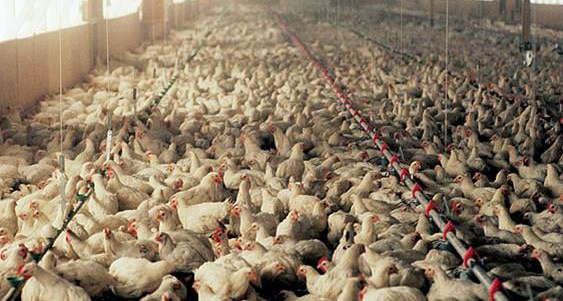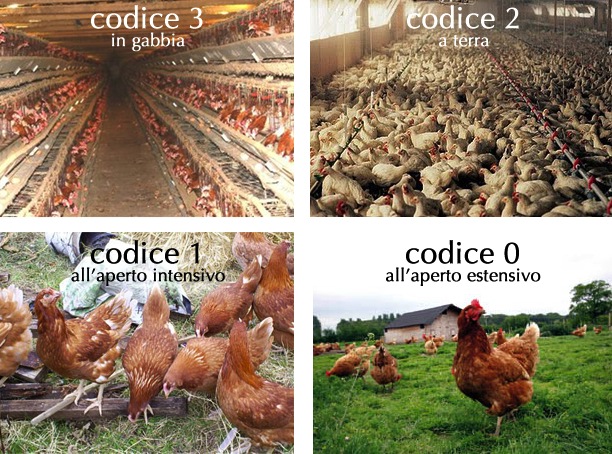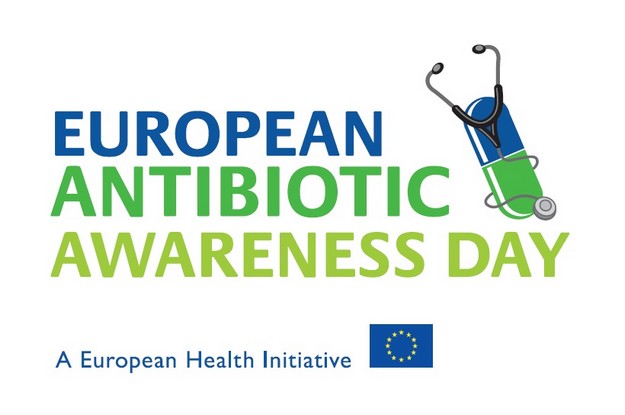
Eating small doses of antibiotics via chicken can lead to the development of antibiotic resistant bacteria in humans. No new class of antibiotics has hit the market since the late 1980s. The annual health care cost of antibiotic resistance is estimated at $20 billion and 23,000 deaths. "We are heading towards a medical catastrophe"
Basudev Mahapatra Wednesday 13 August 2014 The Indro
 In India, those who believe they can stay fit through the consumption of chicken meat will also develop resistance to some antibiotics. As a result, the likelihood of Indians falling prey to a variety of otherwise treatable ailments increases. Part of this resistance may be due to the extensive and unregulated use of antibiotics in poultry farming, says a study conducted by the Pollution Monitoring Laboratory (PML) of New Delhi, in the think tank of the research and consulting company Center for Science and Environment (CSE).
In India, those who believe they can stay fit through the consumption of chicken meat will also develop resistance to some antibiotics. As a result, the likelihood of Indians falling prey to a variety of otherwise treatable ailments increases. Part of this resistance may be due to the extensive and unregulated use of antibiotics in poultry farming, says a study conducted by the Pollution Monitoring Laboratory (PML) of New Delhi, in the think tank of the research and consulting company Center for Science and Environment (CSE).
“Antibiotics are no longer just for treating human diseases. The poultry industry, for example, uses antibiotics as a growth promoter. The chickens are fed antibiotics so they gain weight and grow faster.", he said Sunita Narain, director general of CSE, presenting the results of the study.
The CSE study found antibiotic residues in 40 percent of the chicken samples tested. Note how chicken is one of the most popular ingredients among non-vegetarians. “Indian public health experts have long suspected that rampant use of antibiotics in animals could increase antibiotic resistance in humans. But the government does not collect data on the use of antibiotics in the country, let alone the prevalence of antibiotic resistance.", he said Chandra Bhushan, head of the PML laboratory, adding: "Our study demonstrates on the one hand that such rampant use may be strongly linked to growing antibiotic resistance in humans in India."
Research and results
 PML selected 70 chicken meat samples for testing: 36 samples were taken from Delhi, 12 in Noida, eight from Gurgaon and seven each from Faridabad and Ghaziabad, all within the National Capital Region (NCR). Three tissues – muscles, liver and kidneys – were analyzed for traces of the six most used antibiotics in poultry farms: oxytetracycline, chlortetracycline and doxycycline (class: tetracyclines); enrofloxacin and ciprofloxacin (class: fluoroquinolones) and neomycin, an aminoglycoside. This is the largest study to date in India to test for antibiotic residues in chicken.
PML selected 70 chicken meat samples for testing: 36 samples were taken from Delhi, 12 in Noida, eight from Gurgaon and seven each from Faridabad and Ghaziabad, all within the National Capital Region (NCR). Three tissues – muscles, liver and kidneys – were analyzed for traces of the six most used antibiotics in poultry farms: oxytetracycline, chlortetracycline and doxycycline (class: tetracyclines); enrofloxacin and ciprofloxacin (class: fluoroquinolones) and neomycin, an aminoglycoside. This is the largest study to date in India to test for antibiotic residues in chicken.
Residues of five out of six antibiotics were found in all three tissues of the chicken samples. They were in the range of 3.37-131.75 mg/kg. In the 40 percent of samples contaminated with antibiotic residues, 22.9 percent contained residues of only one antibiotic, while the remaining 17.1 percent of the samples contained more than one antibiotic. In a sample from Gurgaon, a cocktail of three antibiotics was found: oxytetracycline, doxycycline and enrofloxacin. This points to the rampant use of various antibiotics in the poultry industry. The researchers point out that antibiotics are often get pumped in chicken during a life cycle of 35-42 days. Occasionally used to treat infections, however, they are usually mixed with feed to promote growth; they are therefore regularly administered to all birds, for several days, to prevent infections, even when there are no traces or suspicions. “Our study is just the tip of the iceberg. There are many more antibiotics that are used on a large scale and that the laboratory has not tested" Bhushan said.
Fatal to human health
The large-scale overuse of antibiotics in poultry is leading to the emergence of antibiotic-resistant bacteria. These bacteria are then transmitted to humans through food or the environment. Additionally, eating small doses of antibiotics via chicken can also lead to the development of antibiotic-resistant bacteria in humans.
Responding to a recent question in Parliament, Union Health Minister Harsh Vardhan said the number of multi-drug-resistant (MDR) conditions resistant to various drugs) increased five-fold between 2011 and 2013; studies show that one third of MDR-TB cases are resistant to fluoroquinolones, which are essential for the treatment of forms of tuberculosis.
To ascertain the link between antibiotic abuse in poultry farms and antibiotic resistance in humans, CSE researchers also reviewed 13 studies conducted by various public and private hospitals across the country, between 2002 and 2013. They found that resistance to ciprofloxacin, doxycycline and tetracyclines is very high. These are the same antibiotics that have been detected in chicken samples. The problem is compounded by the fact that many antibiotics that are essential and important to humans are used by the poultry industry. In India, there is growing evidence that resistance to fluoroquinolones, such as ciprofloxacin, is rapidly increasing and the treatment of life-threatening diseases such as sepsis, pneumonia and tuberculosis is becoming increasingly difficult because the microbes that cause these diseases are becoming increasingly resistant to the fluoroquinolones.
The CSE study found two fluoroquinolone antibiotics -- enrofloxacin and ciprofloxacin -- in 28.6 percent of the chicken samples tested. With antibiotics becoming less effective, the world needs new medicines. Unfortunately, no new class of antibiotics has hit the market since the late 1980s. In the United States, the largest user of antibiotics for food-producing animals, more than two million people suffer from antibiotic resistance-related illnesses each year, and 23,000 of them succumb to the disease. The annual healthcare cost due to antibiotic resistance is estimated at US$20 billion. Similar estimates are not available for India, but cases of high antibiotic resistance are emerging across the country.
Looking for a regulation
 Taking as fact that the EU has banned the use of antibiotics as growth promoters and the World Health Organization (WHO) recommends that key antibiotics for human use should not be used in animals, Bhushan said: “India should take a comprehensive approach to address this issue. Especially the fact that resistant bacteria appear in animals and their transmission takes place through food and the environment. As long as we continue to misuse antibiotics in animals, we will not be able to solve the problem of antibiotic resistance in humans. For India, therefore, the priority should be to implement systems to reduce the use of antibiotics in poultry farms and in the food of other animals".
Taking as fact that the EU has banned the use of antibiotics as growth promoters and the World Health Organization (WHO) recommends that key antibiotics for human use should not be used in animals, Bhushan said: “India should take a comprehensive approach to address this issue. Especially the fact that resistant bacteria appear in animals and their transmission takes place through food and the environment. As long as we continue to misuse antibiotics in animals, we will not be able to solve the problem of antibiotic resistance in humans. For India, therefore, the priority should be to implement systems to reduce the use of antibiotics in poultry farms and in the food of other animals".
The CSE has recommended that the government ban the use of antibiotics as growth promoters and in the prevention of livestock disease, but disallow the use of antibiotics in poultry, a staple food for humans. They are trying to get the government to regulate the poultry feed industry and the sale of antibiotics, to prevent antibiotics from being used as additives. “The rise of antibiotic resistance in humans could also lead to the failure of many therapies, impacting the economy of individual households and the entire country. If the measures are not started immediately and if the poultry industry is still allowed to use antibiotics in this way, we will face a medical catastrophe.", experts say.
Translation of Valeria Noli @valeria_noli
Related news:
Cameron's appeal: «Global action for new antibiotics»
Cameron: Antibiotic-resistant bacteria are 'a threat to humanity'
Antibiotics, the abuse continues
Advanced strategies for the development of innovative antibiotics. In the last 15 years, pharmaceutical companies have massively given up on the development of antibiotics, complaining of high research costs, poor economic returns and excessive regulatory burdens (AIFA)





